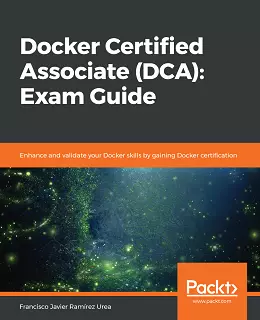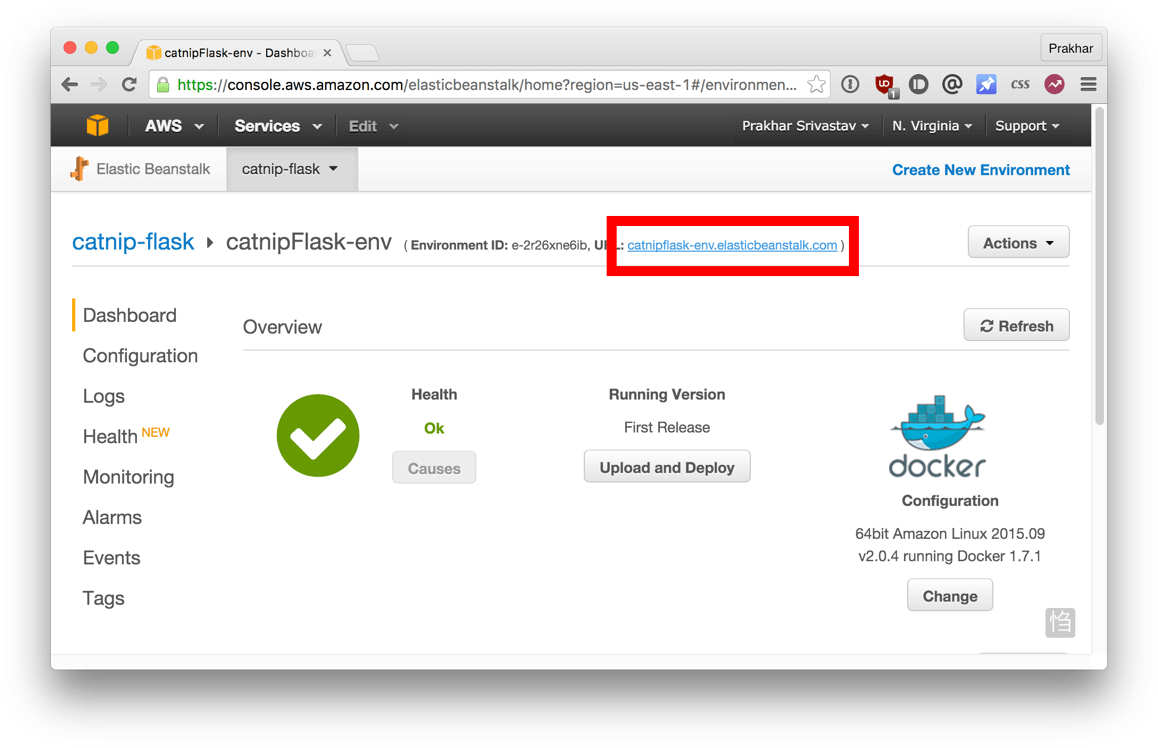Docker Tutorial Pdf Download
- Docker Tutorial Pdf Download Full
- Docker Tutorial Pdf Download Free
- Docker Tutorial Pdf Download Windows 10
- Docker Tutorial Pdf Download Free
- Docker Tutorial Point Pdf Download
Docker Tutorial Pdf Download Full
- In this tutorial, you'll learn how to run different Python versions in Docker. By following the examples, you'll see how you can play with the latest development version of Python, and how to use Dockerfiles to set up Python environments and package your own scripts.
- Not all options will work the same inside Docker: changing ports doesn’t make sense (use docker run options instead), and paths are paths in the container. Folders Sharing ¶ To set custom Request Filters use -v Docker option.
While you are connected with the server via Putty/Terminal, you can install Docker container. Execute the following codes sudo yum update -y sudo yum install -y docker sudo service docker start sudo user-mod -a -G docker ec2-user exit Launch again the connection ssh -i 'docker.pem' This email address is being protected from spambots.
Linux + Docker¶
Install Docker. Make sure Docker version >= 17 is installed.
Pull the image:
Start the container:
Splash is now available at 0.0.0.0 at port 8050 (http).
OS X + Docker¶
Install Docker for Mac (see https://docs.docker.com/docker-for-mac/).Make sure Docker version >= 17 is installed.
Pull the image:
Start the container:
- Splash is available at 0.0.0.0 address at port 8050 (http).
Splash Versions¶
dockerpullscrapinghub/splash will give you the latest stable Splashrelease. To obtain the latest development version usedockerpullscrapinghub/splash:master. Specific Splash versionsare also available, e.g. dockerpullscrapinghub/splash:2.3.3.
Customizing Dockerized Splash¶
Passing Custom Options¶
To run Splash with custom options pass them to dockerrun, afterthe image name. For example, let’s increase log verbosity:

To see all possible options pass --help. Not all options will work thesame inside Docker: changing ports doesn’t make sense (use docker run optionsinstead), and paths are paths in the container.
Folders Sharing¶
To set custom Request Filters use -v Docker option. First, createa folder with request filters on your local filesystem, then make it availableto the container:
Replace <my-filters-dir> with a path of your local folder with requestfilters.
Docker Data Volume Containers can also be used. Checkhttps://docs.docker.com/userguide/dockervolumes/ for more info.
Proxy Profiles and Javascript Profiles can be addedin a similar way:
To setup Adding Your Own Modules mount a folder to/etc/splash/lua_modules. If you use a Lua sandbox(default) don’t forget to list safe modules using--lua-sandbox-allowed-modules option:
Warning
Folder sharing (-v option) may still have issues on OS X and Windows(see https://github.com/docker/docker/issues/4023).If you have problems with volumes, use workarounds mentionedin issue comments or clone Splash repo and customize its Dockerfile.
Building Local Docker Images¶
To build your own Docker image, checkout Splash source code using git,then execute the following command from Splash source root:
To build Splash-Jupyter Docker image use this command:
You may have to change FROM line in dockerfiles/splash-jupyter/Dockerfileif you want it to be based on your local Splash Docker container.
Custom qtwebkit binaries¶
Pass URL of binaries archive in docker build argument, e.g.:
Custom qtwebkit build¶
You need a special container for this. There is one in Dockerfile for splash:
Checkout qtwebkit code and mount it to a build container:
To build qtwebkit from sources run next commands inside the container:
Make build.7z available by HTTP protocol. Assets files of release section ona github is a good place for this.
Before we build our first BeeWare app, we have to make sure we’ve gotall the prerequisites for running BeeWare.
Install Python¶
Docker Tutorial Pdf Download Free
The first thing we’ll need is a working Python interpreter, running Python 3.5or higher.
If you’re on macOS, you can get the official installer fromthe Python website. You can use anystable version of Python from 3.5 onward (although we’d advise avoidingalphas, betas, and release candidates unless you really know what you’redoing).

If you’re on Linux, you’ll install Python using the system package manager(apt on Debian/Ubuntu/Mint; dnf on Fedora, or pacman on Arch).
We don’t support Raspberry Pi at this time.
If you’re on Windows, you can get the official installer from the Pythonwebsite. You can use any stableversion of Python from 3.5 onward (although we’d advise avoiding alphas,betas and release candidates unless you really know what you’re doing.
Alternative Python distributions
There are lots of different ways of installing Python. You can installPython through homebrew. You can use pyenvto manage multiple Python installs on the same machine. Windows userscan install Python from the Windows App Store. Users from a data sciencebackground might want to use Anaconda or Miniconda.
It doesn’t matter how you’ve installed Python - it only matters that youcan run python3 from your operating system’s command prompt/terminalapplication, and get a working Python interpreter.
Install dependencies¶
Next, install the additional dependencies needed for your operating system:
Building BeeWare apps on macOS require:
Git, a version control system. You can download Git fromgit-scm.org.
Xcode, Apple’s IDE tooling. Xcode is available for freefrom the macOS App Store.
To support local development, you’ll need to install some system packages.The list of packages required varies depending on your distribution:
Ubuntu 16.04, Debian 9
Ubuntu 18.04, Debian 10
Fedora

Arch, Manjaro
Briefcase also uses a tool called AppImage to build binaries that can beused across Linux distributions. However, building AppImage binaries forLinux is complicated, because of the inconsistent library versions presenton each distribution. Briefcase uses Docker to provide a well-controlledbinary environment for hosting AppImage builds.
Official installers for Docker Engine are availble for arange of Unix distributions. Follow the instructions for your platform.Once you’ve installed Docker, you should be able to start an Ubuntu 16.04container:
This should show you a Unix prompt (something like root@84444e31cff9:/#)inside your Docker container. Type Ctrl-D to exit Docker and return to yourlocal shell.

Building BeeWare apps on Windows requires:
Git, a version control system. You can download Git from fromgit-scm.org.
WiX Toolset, a set of utilities for building Windows installers. Aninstaller can be obtained from the WiX Toolset website.
Set up a virtual environment¶
We’re now going to create a virtual environment - a “sandbox” that we can useto isolate our work on this tutorial from our main Python installation. If weinstall packages into the virtual environment, our main Python installation(and any other Python projects on our computer) won’t be affected. If we makea complete mess of our virtual environment, we’ll be able to simply delete itand start again, without affecting any other Python project on our computer,and without the need to re-install Python.
Docker Tutorial Pdf Download Windows 10
If this worked, your prompt should now be changed - it should have a(beeware-venv) prefix. This lets you know that you’re currently in yourBeeWare virtual environment. Whenever you’re working on this tutorial, youshould make sure your virtual environment is activated. If it isn’t, re-run thelast command (the activate command) to re-activate your environment.
Alternative virtual environments
If you’re using Anaconda or miniconda, you may be more familiar with usingconda environments. You might also have heard of virtualenv, apredecessor to Python’s built in venv module. As with Python installs -it doesn’t matter how you create your virtual environment, as long as youhave one.
Even then - strictly speaking, using a virtual environment is optional. Youcan install BeeWare’s tools directly into your main Python environment.However, it’s really, really, really recommended that you use avirtual environment.
Docker Tutorial Pdf Download Free
Next steps¶
Docker Tutorial Point Pdf Download
We’ve now set up our environment. We’re ready to create our first BeeWareapplication.

